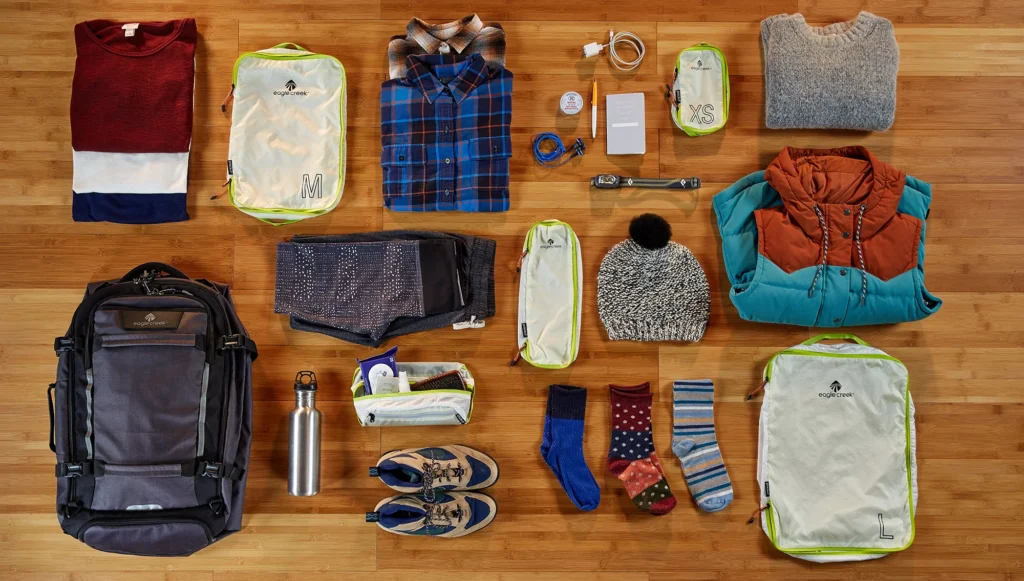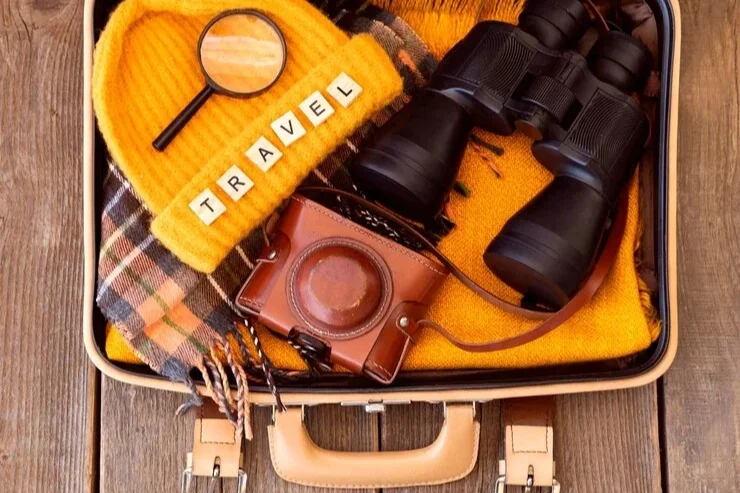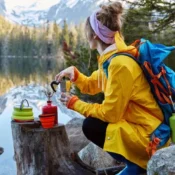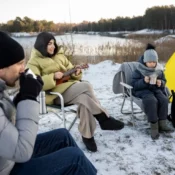Going on outdoor activities entails planning, and one of the most important aspects is packing. Regardless of whether one is going hiking, camping or trekking, it is essential to pack smartly so as to avoid regretfully coming out of the trip. Adhering to the following packaging tips guidelines guarantees that adventurers take only a small luggage with them, but they are able to carry all the essential items. Below is a detailed packaging tips guide on how to pack smart for the outdoors, including the type of backpack, how to load it and many more.
Choose the Right Backpack
The choice of the appropriate backpack is the first step in the art of packing. The size of the backpack should depend on the length of the trip as well as the type of trip a person plans to undertake. Thus, depending on the length of a hike or a camping trip, one may need a 30-40 litre backpack for a shorter trip and a 50-70 litre backpack for a trekking trip. This is absolutely true when it comes to trekking backpacks, with weight distribution being an essential factor to consider. A good quality backpack that can be adjusted to the size of the wearer and has padded hip belts will prevent pressure from being placed on the shoulders and back.
Another factor that deserves consideration is the material used in making the backpack. Waterproof backpacks for camping offer the required protection to the gears if they come into contact with rain or water by accident. Backpacks with water resistance can also be used, but it comes with a rain cover to enhance the protection. These features help to keep the outer garments, food and electrical equipment dry as required in using the outdoor gears and other accessories.
Create a Checklist of Essentials
It is always of great importance to have a cheque list, especially when packing for a trekking packaging checklist would come in handy. These items should comprise navigation aids (maps, compass or GPS system), first aid kits, multi-tools, food and water, and the proper clothing. Time and space are the most critical factors that define packing, so more trip length and terrain with longer hikes or rough terrains may necessitate carrying extra clothes, walking sticks, or climbing gear. It is, therefore, imperative to have a hiking essential packing list so that all of the essential items are included. They should be items such as compasses, flashlights, knives, lighters, matches, and first aid kits.
Pack Light but Smart
Packing light is not just about taking less luggage; it involves choices on what to pack. To this, it is necessary to ensure that lightweight packing for hiking that deals with weight placement and layering. It is necessary to distribute the items with more weight towards the middle and towards the back of the backpack and distribute the items with less weight towards the upper part of the backpack or towards the sides.
It is crucial to observe the concept of what to pack and how to pack it when it comes to backpacking packing tips. This ensures that only the most appropriate equipment is taken since the equipment that is portable and versatile is chosen. When packing the outdoor gear packaging start with the most important items then pack the other items if there is any space left.
Another good strategy is to choose multi-purpose items for efficient packing. For instance, a thin breathable coat is equally useful as a protection from wind and as an umbrella during the rain. A bandana can be used for a number of things for instance, as a head gear, a towel, sling and among others when the need arises. The multi-functional clothing packing gear makes it possible to ensure that because of its compactness and its light weight, it is sufficient for the purpose that it has been designed to perform.

Clothing: Dress in Layers
In the case of outdoor activities, layering clothes for outdoor trips is one of the best ways of dealing with weather changes. The three-layer system works well: the bottom layer provides a dry environment for the skin, the middle layer creates insulation and keeps the body warm, and the top layer shields against winds and water. Layering ensures that an individual can alter their dressing code in response to the weather or the level of physical activity they are going to undertake.
One of the most important factors that are rarely taken into account when packing for the outdoors is the weight per garment and how compact the garments can be packed. When creating the hiking essentials packing list, start with clothes that are comfortable, not heavy, do not retain moisture and are easy to put on over the others. Items made of Merino wool or synthetic material can offer warmth while keeping the extra weight of the backpack low.
Use Packing Cubes and Compression Bags
Packing cubes and compression bags are useful in creating a system to organise equipment systematically. Packing cubes are necessary because, for example, clothes or cooking utensils are grouped when placing them in a backpack. Compression bags for hiking gear is also valuable because they help to reduce the size of large objects like sleeping bags or other clothes. Lastly, in the conclusion of the outdoor gear packaging tips, packing equipment including packing cubes and compression bags are used.
Pack Food and Water Smartly
Food and water packing is among the most important and sensitive packing essentials for camping. It is always important to eat right, more so when people are planning to engage in a physical activity outside. In regard with the food and water storage for trekking, it is better to have inedible and non-space taking products. A bottle is good, but a water philtre or purification tablets are far more effective at sourcing water from natural sources. This approach eliminates the need to have so much water yet the adventurer feels fresh without having to be weighed down.
First-Aid Kit and Emergency Essentials
There are some measures that one should always ensure to take, before going for an outdoor trip. A first-aid kit is necessary for the trip and should contain such items as adhesive plasters, antiseptic wipes, drugs against headache and sore throat, and other medicines which might be needed in case of emergency and which were not included into the list of medications to be taken along with the group leader. Additional safety gear for outdoor trips might include a whistle, emergency blanket, fire starter, multi-tool, and headlamp with spare batteries.
Consider the Environment
It is always advisable to respect the natural ecosystem during a camping adventure. Some real-life examples of eco-friendly packing tips include using resealable containers to store food and using biodegradable soap and washing cloths instead of plastic bags. Minimising the use of disposables and using products that have the most negligible impact on the environment are some ways that adventurers can reduce the impact. Following the Leave No Trace principle is to help preserve the environment. This means taking all rubbish, not disturbing fauna and flora and sticking to paths to avoid damaging the ground.
How to Pack for Easy Access
Some of the backpack organisation tips given involve packing items in such a way that they can be easily retrieved. A quick-access pocket or compartment should contain things like snacks, water, a map, or a first-aid kit. Heavy products should be stocked closer to the back and centre to ensure stability when shifting the equipment. When taking into consideration how to pack for trekking, it is easy to access and balance.
Test Your Pack Before the Trip
Carrying the backpack and loading it before the trip lets the person know whether it is comfortable or well-balanced. It is advisable to train with a loaded pack since one can be able to fix some issues with the weight and placement of the equipment. Ideally, this step is useful to avoid such nuisances as discomfort and strain during the actual adventure.
Conclusion
Exploring nature is fun and exciting, but packing correctly is the best way to ensure that the trip is fun and safe. Adopting these packaging tips for outdoor adventures will help one pack all that is needed without cramming the backpack. The proper techniques, like picking the best backpacks for trekking, lightweight packaging tips for hiking, and utilising some tools like compression bags for hiking gear, can go a long way. Smart packing is dressing in layers, packing gear with packing cubes, and packing for emergencies.
Furthermore, keeping eco-friendly packing tips helps travellers preserve the untouched nature for other tourists. Therefore, testing the pack before the trip and rehearsing how to pack for a hike will ensure a balanced, comfortable trip. By following these valuable packaging tips, adventurers can confidently pack smart for outdoor adventures and be sure that he has taken all the necessities with them without adding extra weight to their backpacks. Preparedness is a way to enable the emphasis in the process, in this case, in hiking nature and making memories.








[…] Iceland is made for nature lovers, so prepare for adventure: […]